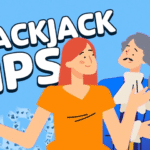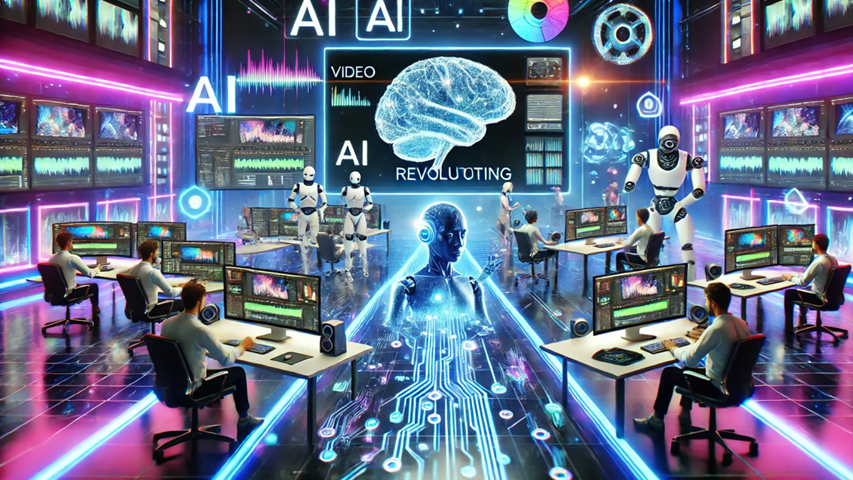These days, anyone who makes videos, snaps photos, or posts online knows the clock never stops. Clients want the next big thing yesterday, and social feeds never sleep. Because of that pressure, creators are turning to artificial intelligence. Whether you run a YouTube channel, manage a brand’s Instagram, design ads, or shoot short films, an AI helper is already close at hand. Smart editing apps trim clips, polish pictures, and do a thousand little chores, freeing you to dream up bigger ideas.
The Rise of AI in Digital Content Creation
Forget the old image of robots holed up in labs; AI is now part of nearly every creative tool you touch. These programs sift through mountains of data, spot trends, and tackle the busywork nobody loves. For content makers, that means writing quick scripts, stitching together raw video, sharpening photos, swapping faces on demand, or even matching lip movement to a new voice track. AI isn’t stealing the show; it’s tuning the stage so your own ideas shine brighter.
AI in Video Editing: Smarter Cuts and Stunning Effects
Artificial Intelligence has changed how video projects are finished. In the past, editors spent countless hours slicing clips, lining up sound, correcting colors, and adding special touches. Now platforms like Adobe Premiere Pro with Sensei, Runway, and Pictory lend a virtual hand with intelligent tools that do much of this work for you.
1. Auto-Cut and Scene Detection
AI can scan raw footage, spot scene breaks, and pick the cleanest takes. This speed-up matters for vloggers and short-video creators who live by tight deadlines.
2. Smart Transcription and Subtitles
Editors can whip up accurate subtitles in just seconds. Programs such as Descript and Kapwing rely on AI speech recognition and let users tweak the video simply by editing the text.
3. AI-Generated Effects and Enhancements
Color grade, fix light problems, even swap backgrounds—AI can handle it all. These gadgets let newer creators play with high-end looks without years of study.
4. Face Swap AI for Creative Freedom
Face swap apps are really taking off these days. Programs such as DeepFakes Lab and Reface lean on deep-learning tricks to slide one face onto another in both photos and videos. For graphic designers, TikTok makers, and indie filmmakers, this means swapping actors in a short scene, jazzing up a meme, or just posting a funny celebrity mash-up-all done with eye-popping smoothness.
Shops and brands are also jumping on board by using the tech in virtual try-ons. Customers can see how clothes or makeup look on different faces in real time, helping them shop with much more confidence.
5. Lip Sync AI for Multilingual and Dubbing Content
Lip sync AI is changing the way the world watches videos. Rather than relying on old-school dubbing that always seems off, apps like Synthesia and Paper Cup match animated mouth moves to translated audio. That new speech appears to come straight from the original speaker, making the whole project feel far more real and polished.
For YouTubers, online teachers, and small brands, the tech blasts open the door to global viewers, letting them drop videos in many languages without losing the original energy.
Photo Editing: AI Turns Beginners into Pros
Editing photos used to feel like a job only experts could handle, but AI has changed that. Of course, Photoshop is still the big name, yet tools like Luminar Neo, Canva, and Fotor now let anyone polish a picture with almost zero effort.
1. One-Click Enhancements
These smart apps can scan a shot and quickly fix brightness, contrast, and sharpness with a single tap. The move saves hours the average user would otherwise spend sliding dozens of knobs.
2. Background Removal and Object Detection
In the past, swapping a background meant selecting every edge by hand. Today, AI isolates people or objects and zaps unwanted stuff in just a few seconds, a trick that product shooters, social media marketers, and portrait fans all adore.
3. Style Transfer and AI Art
An AI can steal the brush strokes from a Van Gogh or comic-book cover and paint over your photo, turning it into something fresh and unexpected. Designers and digital artists love these wild new looks that usually take hours to craft by hand.
Content Creation Made Easy: AI as a Creative Partner
AI isn-t stopping at photos; it-s moving into the writer-s room too. ChatGPT jots blog posts, DALL-E dreams up new images, and Synthesia even gives your script a talking avatar, meaning anyone with good ideas can churn out polished content in barely any time.
1. Scriptwriting and Idea Generation
Creators can count on AI when they need fresh video scripts, blog topics, or snappy social media lines. The tech speeds up planning and helps clear those annoying writer’s block moments.
2. Voiceovers and AI Narration
Services like Murf and Lovo whip up lifelike voiceovers in dozens of languages and accents. That makes them perfect for explainer clips, how-to guides, and animated shorts.
3. Virtual Influencers and AI-Generated Personalities
Brands are starting to roll out AI-made characters-or virtual influencers-to chat with followers. These digital faces use smart models to adjust their replies on the fly.
Collaboration and Workflow: AI in Team Settings
Most content teams now work from different screens and time zones. AI steps in with cloud tools that mix editing, leaving notes, and sharing updates all in one place.
1. Real-Time Feedback and Revisions
Frame.io lets directors, editors, and clients drop comments right onto each video frame. Its AI can even suggest changes or shout out any technical glitches.
2. Version Control and Asset Management
Smart tagging and tracking features keep every file version in line and sort media automatically. That cuts confusion and moves the revision cycle along faster.
Challenges and Ethical Considerations
On the upside AI saves time, yet it also stirs worries. Issues like deep fakes, fake news, and the fading human touch are very real-and still being debated.
1. Authenticity and Creative Voice
AI can copy a style so well it feels human, yet it never really feels anything of its own. Artists still need to mix speed with spark to keep their true voice in every piece they share.
2. Deepface Concerns and Consent
Face-swapping and lip-sync AIs can be fun, but they also spin out fake videos that trick people fast. Always get clear, written permission before putting someone else’s face or words into your project.
3. Copyright and Ownership Issues
When a robot writer or artist spits out a song or picture, it’s not clear who really owns the thing-the programmer, the user, or the machine. Courts and lawmakers are still racing to catch up with that puzzle.
Future Trends: What’s Next for AI in Creative Fields?
Sooner than you think, smarter AIs will read your mood and tweak a story or song live while you work. Look for apps that learn your taste, make editing suggestions before you even ask, and play co-writer on demand.
Improved face-swap and lip-sync tools will let solo creators turn out studio-quality videos on a laptop, cutting out the big budgets that used to limit that kind of power.
Conclusion: Welcome AI as Your Creative Partner
AI isn’t coming for your imagination-it wants to lend a hand. Whether you edit videos, polish photos, or write stories, these tools let you spend more time on your big ideas. Creators who lean into new features like face swaps and lip-sync tech will stand out in the crowded online space.
So why wait? Try out an AI app, speed up your process, and open the door to fresh, fun projects.










